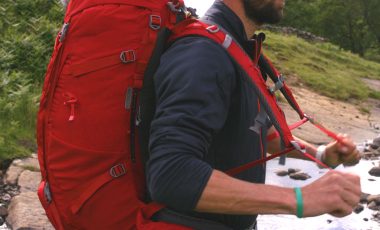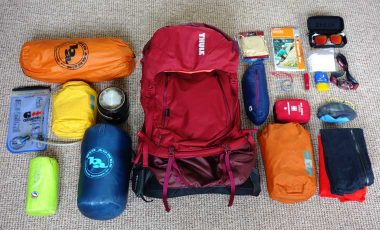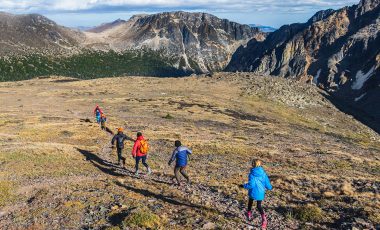You wouldn’t dream of wearing hiking boots that don’t fit properly. If it’s not blisters then there’d be a twisted ankle or sprain in no time. And even something less technical like a shirt of jacket can cause discomfort if it’s ill-fitting. The same applies to wearing all different types of backpacks, but especially trekking packs and hiking daypacks. You’ll probably spend a ton of time choosing one that suits you from a practical point of view. But it’s also essential that you know how to fit a backpack too. Get the size right before you buy and then learn how to fit it properly once it’s loaded. The result is pain and injury-free hiking from day one.
But don’t just take our word for it!

Expert advice
Lowe Alpine – Backpack Brand
We know first hand just how important it is to know how to fit a backpack. But we’re not experts. So to make sure we’ve been doing it right all this time we asked backpack brand Lowe Alpine to talk us through exactly how to fit a backpack. They’ve also thrown in some killer advice on the whole process from start to finish.
- Get the right size bag
- How to measure torso length
- How to measure hip size
- How to fit a backpack
- Step by step video of how to fit a backpack
- How should your backpack feel when fitted correctly?
- What would a backpack feel like if it were incorrectly fitted?
Get the right size bag
The first thing to do when choosing a backpack is to try on ones that are the right size for you. Lowe Alpine advises that:
“A well fitted pack is essential to enjoying your trip, be it a day trip or a multi-day expedition. If your pack is not of a good fit issues can start to unfold. These include the backpack rubbing on your skin or on protruding bones, or it can affect your center of gravity making you off-balance.”
So we asked exactly how to figure out what the right size backpack is.
Measure torso length
“Your torso length can be found by measuring from your C7 vertebra (the bony protrusion from the back of your neck when looking down) to the height of your iliac crest (top of your hip bones, where you put your hands on your hips).”
Measure hip size
“For the perfect fit the hip belt should encompass the hip bone (iliac crest) as this creates a solid base on which to support the weight. Wearing the pack too high, around the soft part of the waist, means the pack moves around when walking and becomes uncomfortable. Wearing the hip belt too low again creates discomfort and can impede your natural gait.”

Once you’ve got these measurements you can match them against the size guides of different backpack brands.
Note: Not all brands will use the same size guidelines so double check your torso length and hip size before you choose your backpack.
How to fit a backpack
Once you’ve done the measurements and found a backpack that is the right size for you, you’ll need to know how to fit a backpack once it’s fully loaded. It feels very different with weight in!
To do this process properly make sure you pack it well with the weight distributed evenly and all the heavy things packed in all the right places. For more information on this, read our guide on how to pack a backpack.
Now you’re all set to properly fit the loaded backpack. Here’s how:
If you’re unsure about any of the terminology used in the video, then our guide to the different parts of a backpack will definitely help!
How should your backpack feel when fitted correctly?
“When the pack is fitted correctly is should have a tight and close fit to the back, allowing for ease of movement when undertaking activities. The pack should by tight to the users back meaning that it won’t suddenly move or cause the user to become off balance. The hip belt should have slight movement to allow for the hips to follow their natural gait whilst moving. Most of the weight in the pack should be transferred through to the hips of the user with the harness providing support.”
What would a backpack feel like if it were incorrectly fitted?
“The pack may cause discomfort or make the user feel off balance when using the pack, leading to unwanted pressure points and muscle soreness. When using a pack with a helmet the user should have enough clearance to look up, ensuring the pack does not impede the user’s range of motion. When the chest strap is in use it should be tight enough to stop the harness falling off the shoulders but loose enough to allow for efficient breathing. And there should not be a gap between the top of the shoulders and the shoulder straps”
Thanks to Lowe Alpine for their super useful tips and video that will hopefully leave you feeling totally in the know as to how to fit a backpack to ensure that it is as comfortable as possible.
For more information about their packs, take a read of we thoughts of the all-new Lowe Alpine Aeon 27.










